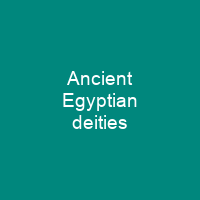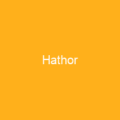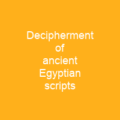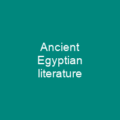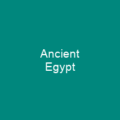Ancient Egyptian deities are the gods and goddesses worshipped in ancient Egypt. Deities represented natural forces and phenomena, and the Egyptians supported and appeased them through offerings and rituals. In different eras, various gods were said to hold the highest position in divine society. There are more than 1,400 deities are named in Egyptian texts.
About Ancient Egyptian deities in brief
 Ancient Egyptian deities are the gods and goddesses worshipped in ancient Egypt. Deities represented natural forces and phenomena, and the Egyptians supported and appeased them through offerings and rituals. In different eras, various gods were said to hold the highest position in divine society, including the solar deity Ra, the mysterious god Amun and the mother goddess Isis. Egyptians prayed for divine help, used rituals to compel deities to act, and called upon them for advice. Gods were assumed to be present throughout the world, capable of influencing natural events and the course of human lives. People interacted with them in temples and unofficial shrines, for personal reasons as well as for larger goals of state rites. Egyptian texts list the names of many deities whose nature is unknown and make vague, indirect references to other gods who are not even named. There are more than 1,400 deities are named in Egyptian texts, whereas his colleague Christian Leitz says there are ‘thousands upon thousands’ of gods. The Egyptian language’s terms for these beings were nṯr, \”god\”, and its feminine form nṮrt, \”goddess\”. Some scholars have argued, based in part on Egyptian writings, that the Egyptians came to recognize a single divine power that lay behind all things and was present in all the other deities. From this perspective, the Egyptians never abandoned their original polytheistic view of the world,. except possibly during the era of Atenism in the 14th century BC, when official religion focused exclusively on an abstract solar deity, the Aten.
Ancient Egyptian deities are the gods and goddesses worshipped in ancient Egypt. Deities represented natural forces and phenomena, and the Egyptians supported and appeased them through offerings and rituals. In different eras, various gods were said to hold the highest position in divine society, including the solar deity Ra, the mysterious god Amun and the mother goddess Isis. Egyptians prayed for divine help, used rituals to compel deities to act, and called upon them for advice. Gods were assumed to be present throughout the world, capable of influencing natural events and the course of human lives. People interacted with them in temples and unofficial shrines, for personal reasons as well as for larger goals of state rites. Egyptian texts list the names of many deities whose nature is unknown and make vague, indirect references to other gods who are not even named. There are more than 1,400 deities are named in Egyptian texts, whereas his colleague Christian Leitz says there are ‘thousands upon thousands’ of gods. The Egyptian language’s terms for these beings were nṯr, \”god\”, and its feminine form nṮrt, \”goddess\”. Some scholars have argued, based in part on Egyptian writings, that the Egyptians came to recognize a single divine power that lay behind all things and was present in all the other deities. From this perspective, the Egyptians never abandoned their original polytheistic view of the world,. except possibly during the era of Atenism in the 14th century BC, when official religion focused exclusively on an abstract solar deity, the Aten.
The Egyptians distinguished nůr from rmœr, ‘people’, but the meanings of the Egyptian and the English terms do not match perfectly. Deceased humans were called nřr because they were considered to be like the gods, whereas the term was rarely applied to many of Egypt’s lesser supernatural beings, which modern scholars often call ‘demons’ Egyptian religious art also depicts places, objects, and concepts in human form. These personified deities were important in myth and ritual to obscure beings, only mentioned once or twice, and may be little more than metaphors that may be blurred between gods and other beings, such as the concept of a ‘deity’ One widely accepted definition of a deity is that a deity has a cult involved in some aspect of the universe, and is described in mythology or other forms of written tradition. According to Dimitri Meeks, n�r applied to any being that was in some way outside the sphere of everyday life. The most common of these signs is a flag flying from a pole. Similar objects were placed at the entrances of temples, representing the presence of a deities, throughout ancient Egyptian history. Other such hieroglyphs include a falcon, reminiscent of several early gods who were depicted as falcons, and a seated male or female deity. The feminine form could also be written with an egg as determinative, connecting goddesses with creation and birth, or with a cobra, reflecting the use of the cobra to depict many female deities.
You want to know more about Ancient Egyptian deities?
This page is based on the article Ancient Egyptian deities published in Wikipedia (as of Dec. 08, 2020) and was automatically summarized using artificial intelligence.
